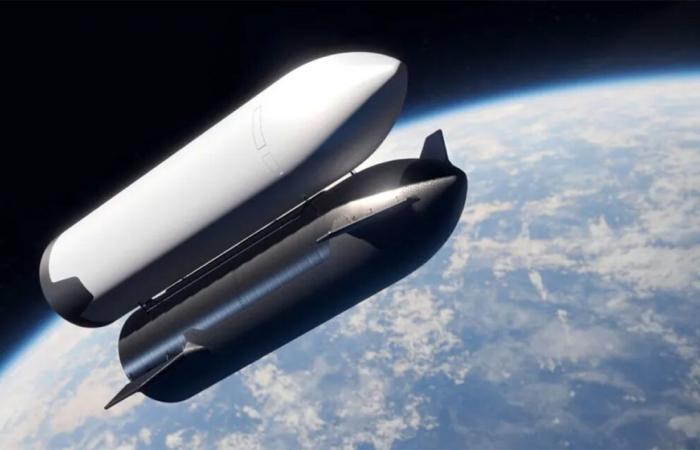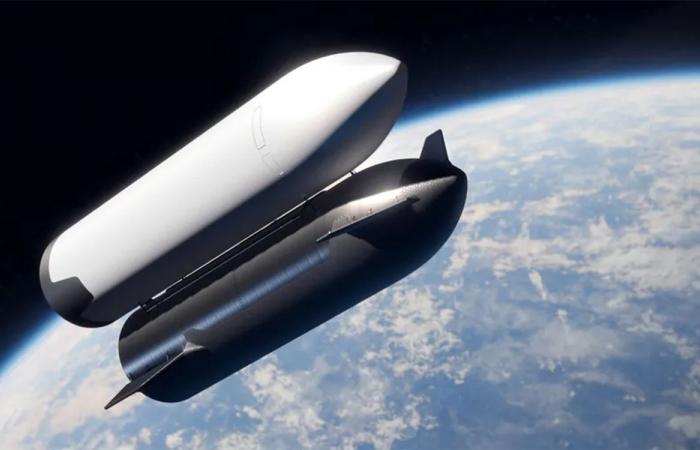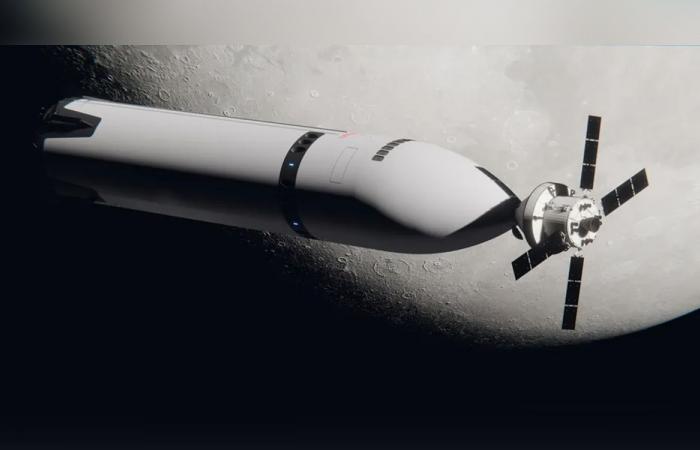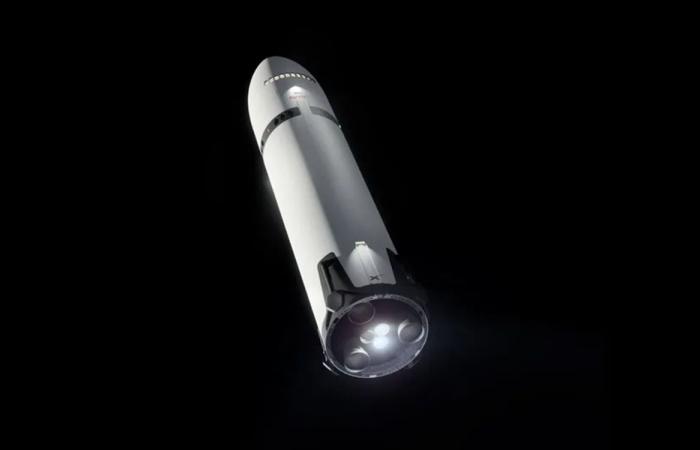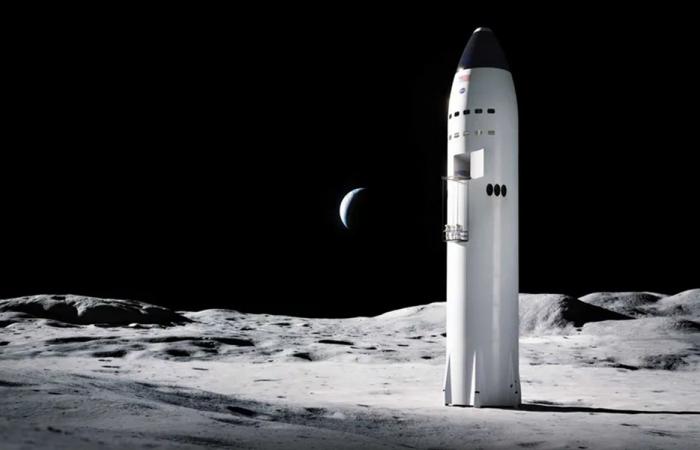NASA and SpaceX reveal in images how a modified version of the Starship rocket will land astronauts on the Moon. This is what the maneuver will look like.
Man is ready to (re)conquer Lune. The last time he set foot on the natural satellite of the Terreit was in 1972 with Apollo 17. Since then, no new footprints have come to mark its relief. There NASA wants to remedy this via mission Artemislaunched in 2022. First, Artemis 1 was content with a test flight without a crew. Next comes Artemis 2. Initially planned for 2024, the Moon flight with four astronauts on board was finally postponed to September 2025.
Also read – NASA reaches key milestone in bringing humans back to the Moon
If all goes well, it will be the turn ofArtemis 3 to leave afterwards and this time, the people on board the ship will indeed land on the target star. But how will this happen in practice? We know that it is a modified version of the SpaceX Starship rocketcalled Human Landing System (HLS) who will take care of it. Now, it is possible to get a clear idea of the process thanks to images posted online by NASA and Elon Musk's space agency.
Here are pictures of how Starship will land astronauts on the Moon
On the rendering serving as the main illustration for this article, we can see the HLS (in white) docked with the “classic” Starship rocket (in black). This maneuver will serve to transmit fuel to the lunar lander to the extent that, loaded with heavy equipment, it will consume a lot to leave Earth.
Then, once in orbit around the Moon, it is the turn of the Orion ship to come and hang at the top of the HLS. The goal is simple: to transport the astronauts on board Orion into the SpaceX machine. The latter will in fact leave without anyone inside.
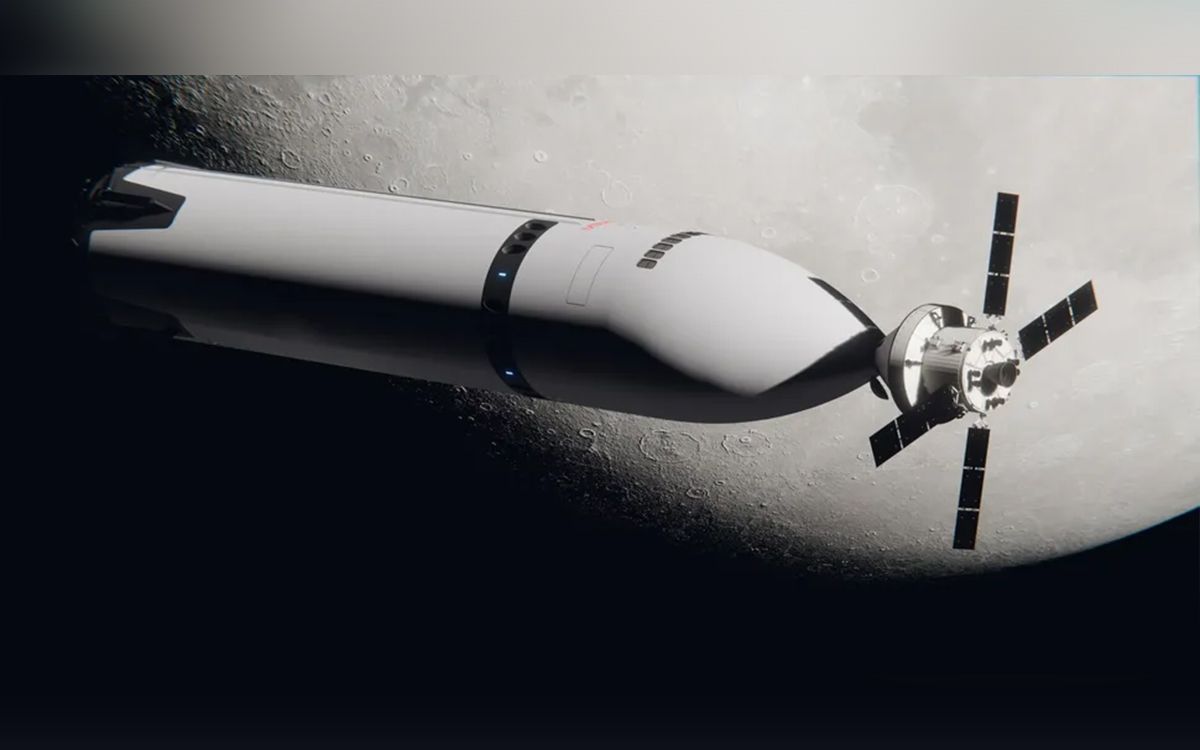

The HLS will then approach the Moon before recovering vertically to begin the moon landing procedure. The rendering below shows the aircraft braking. We can see that two of its six Raptor engines are ignited to slow the descent.


Everything went well, it's time to go out. But no question of jumping from the top of the rocket hoping that the difference in gravity will cushion the fall. The astronauts will use a lunar elevator developed by NASA. This metal cage will follow a rail attached to one of the sides of the HLS.


Note that both explorers are coated with the AxEMU suitpour Axiom Extravehicular Mobility Unit. Developed in partnership with Pradaa famous luxury ready-to-wear brand, it is specifically designed to withstand the rigors of south pole of the Mooncolder than the equator where the Apollo missions landed.


Unless unforeseen, the Artemis 3 mission will be launched in September 2026. Its postponement is due to several concerns during the development of crucial parts, for example the heat shield of Orion. SpaceX's setbacks also contributed to the delay. The company only managed to bring its Starship rocket back in one piece last April. This was the sine qua non condition for considering going to the Moon. Let's hope that no damage will disrupt the schedule again.

